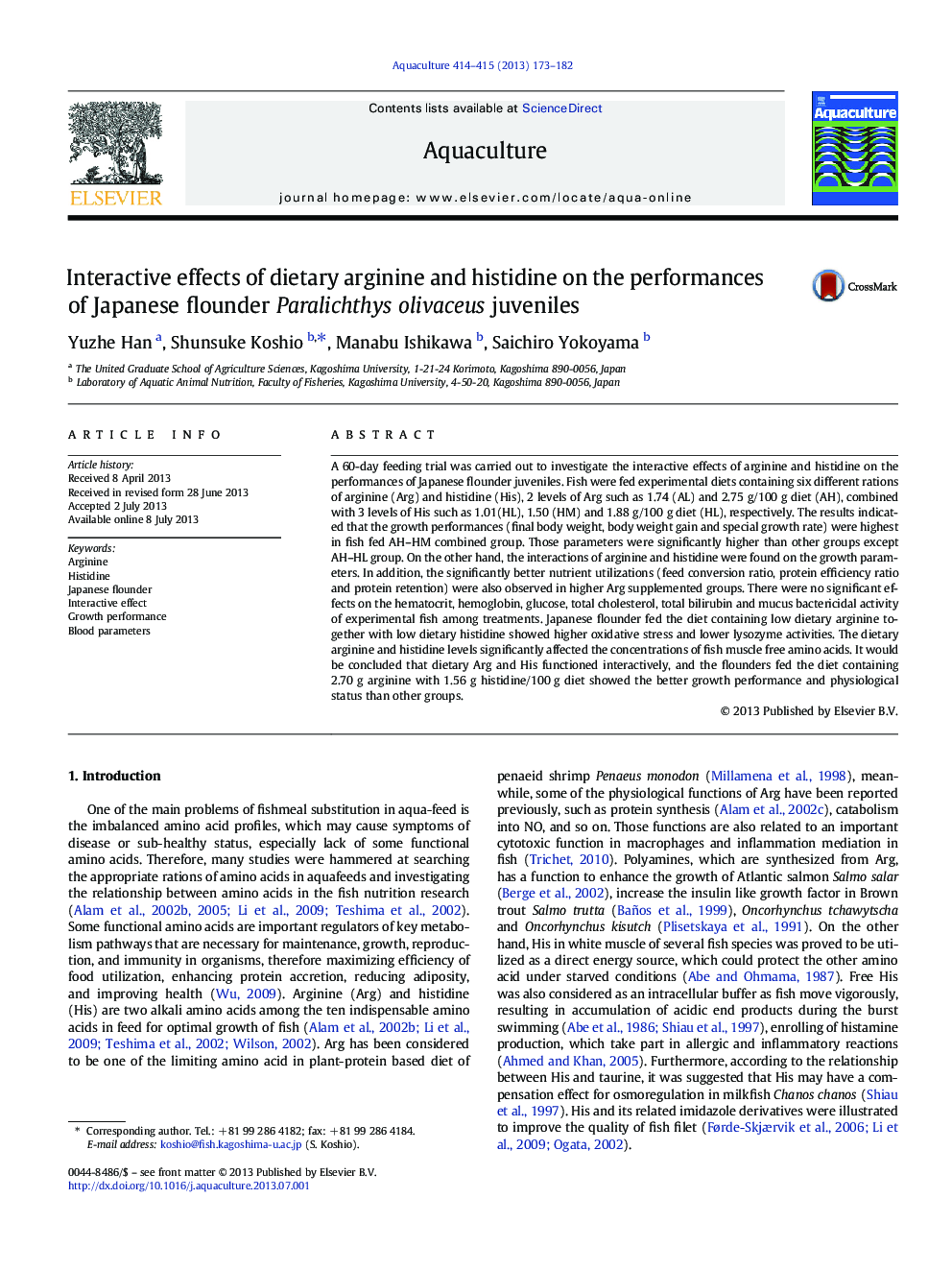| Article ID | Journal | Published Year | Pages | File Type |
|---|---|---|---|---|
| 8495382 | Aquaculture | 2013 | 10 Pages |
Abstract
A 60-day feeding trial was carried out to investigate the interactive effects of arginine and histidine on the performances of Japanese flounder juveniles. Fish were fed experimental diets containing six different rations of arginine (Arg) and histidine (His), 2 levels of Arg such as 1.74 (AL) and 2.75Â g/100Â g diet (AH), combined with 3 levels of His such as 1.01(HL), 1.50 (HM) and 1.88Â g/100Â g diet (HL), respectively. The results indicated that the growth performances (final body weight, body weight gain and special growth rate) were highest in fish fed AH-HM combined group. Those parameters were significantly higher than other groups except AH-HL group. On the other hand, the interactions of arginine and histidine were found on the growth parameters. In addition, the significantly better nutrient utilizations (feed conversion ratio, protein efficiency ratio and protein retention) were also observed in higher Arg supplemented groups. There were no significant effects on the hematocrit, hemoglobin, glucose, total cholesterol, total bilirubin and mucus bactericidal activity of experimental fish among treatments. Japanese flounder fed the diet containing low dietary arginine together with low dietary histidine showed higher oxidative stress and lower lysozyme activities. The dietary arginine and histidine levels significantly affected the concentrations of fish muscle free amino acids. It would be concluded that dietary Arg and His functioned interactively, and the flounders fed the diet containing 2.70Â g arginine with 1.56Â g histidine/100Â g diet showed the better growth performance and physiological status than other groups.
Related Topics
Life Sciences
Agricultural and Biological Sciences
Aquatic Science
Authors
Yuzhe Han, Shunsuke Koshio, Manabu Ishikawa, Saichiro Yokoyama,
